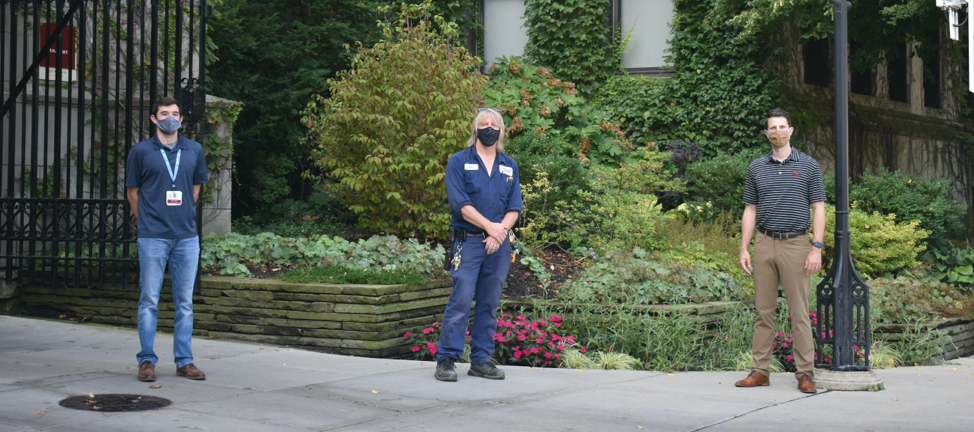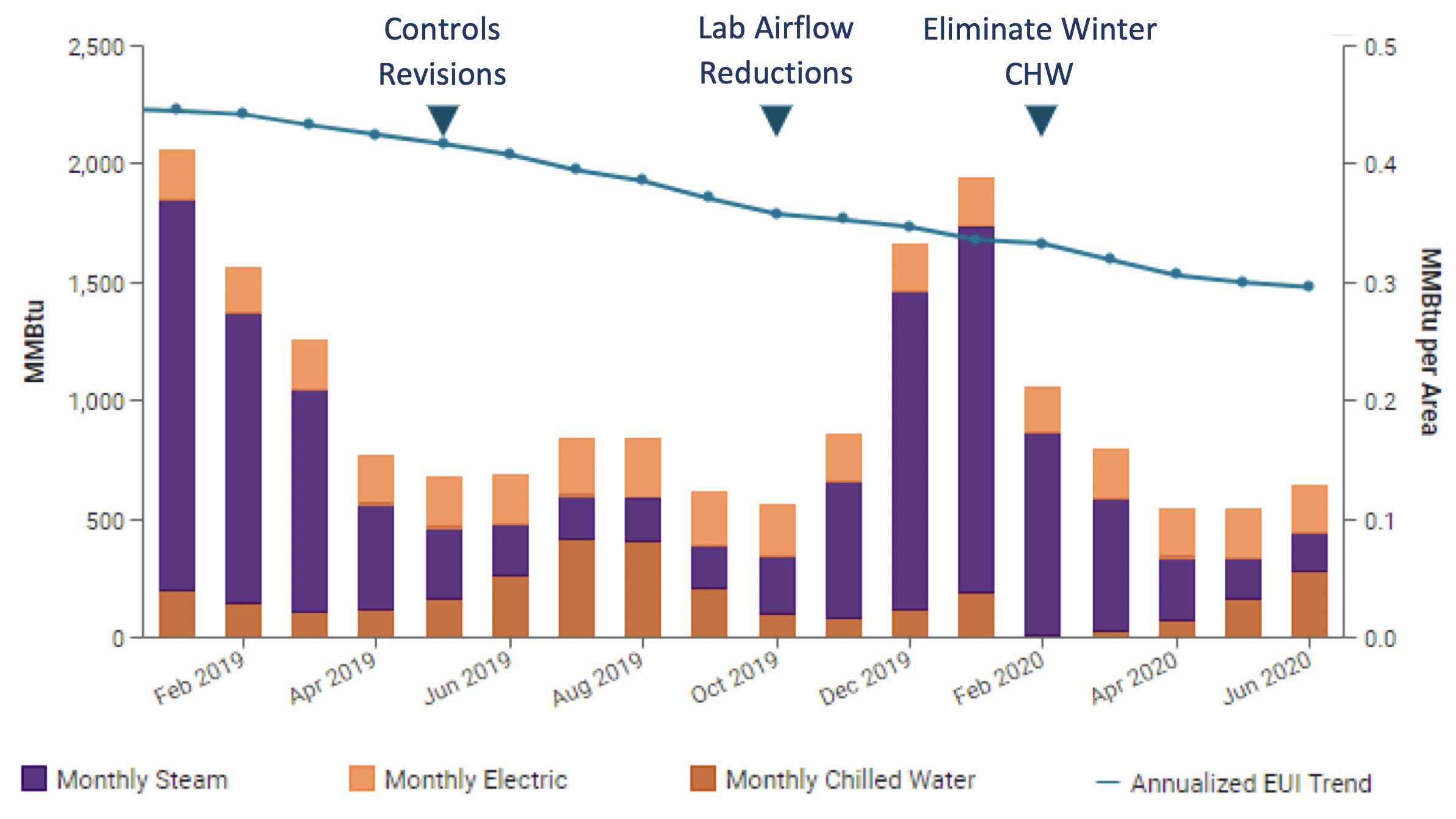As part of the ongoing initiative to improve energy efficiency and reduce greenhouse gas emissions, the University of Chicago recently completed an energy savings project at the Anatomy Building. The Anatomy Building is one of the oldest buildings on campus, constructed in 1897. It is located in the University’s main quadrangle and is home to offices and laboratories in the Biological Sciences Division.
The project included a detailed energy audit and thorough testing of major building systems. This work was performed as part of the Preventative Maintenance and Commissioning (PM+Cx) program, an initiative targeting the 38 most energy-intensive buildings that account for 80% of total campus energy use. This was a joint effort between several departments at the university, including the energy services team in Facilities Services, Biological Sciences Division, North Campus Engineers, and the Building Automation Shop.

Key project team members include from left Max Zmija (Biological Sciences Division), Dale Janeczko (Campus Engineering), and Ryan Hoff (Facilities Services). Not pictured are David Tooley (Biological Sciences Division) and Bob Slivon (Building Automation Shop).
Specific energy reduction projects included reducing room reheat energy, eliminating winter chilled water use, updating laboratory airflows to match current campus standards, and improving airflow to other building spaces. The project also included water savings by eliminating antiquated once-through domestic water cooling systems. In addition, installed building equipment received deep maintenance, and updates were made to the central building automation system to improve occupant comfort controls. In total, 24 system upgrades were identified and implemented as part of this project.
These efforts yielded significant energy and greenhouse gas reductions. The energy usage of the Anatomy building was reduced by 33%. The energy saved in this project reduces greenhouse gas emissions by 222 metric tons eCO2 per year, which is equivalent to eliminating the annual emissions from 25 typical US homes each year. Additionally, this project is expected to reduce water consumption by over 500,000 gallons per year.

Implementation of energy conservation measures reduced the Anatomy Building’s EUI by 33% since the beginning of the project.
The University of Chicago is the proud United States Environmental Protection Agency ENERGY STAR® Partner, collaborating with peer institutions to reduce higher education campus energy usage. The goal of this energy efficiency program is to: (1) reduce the impact on the environment as about 70 percent of University greenhouse gas emissions are from energy usage in campus buildings; (2) redirect funds currently going to utility providers back into the maintenance of our campus buildings; and (3) reduce the risk of disruption to our educational and research mission by locating and correcting issues before systems and components in our buildings fail. More than 200 energy efficiency measures have been completed in the University of Chicago campus buildings since 2009, and buildings will continue to be the primary target of our efforts to reduce greenhouse gas emissions.